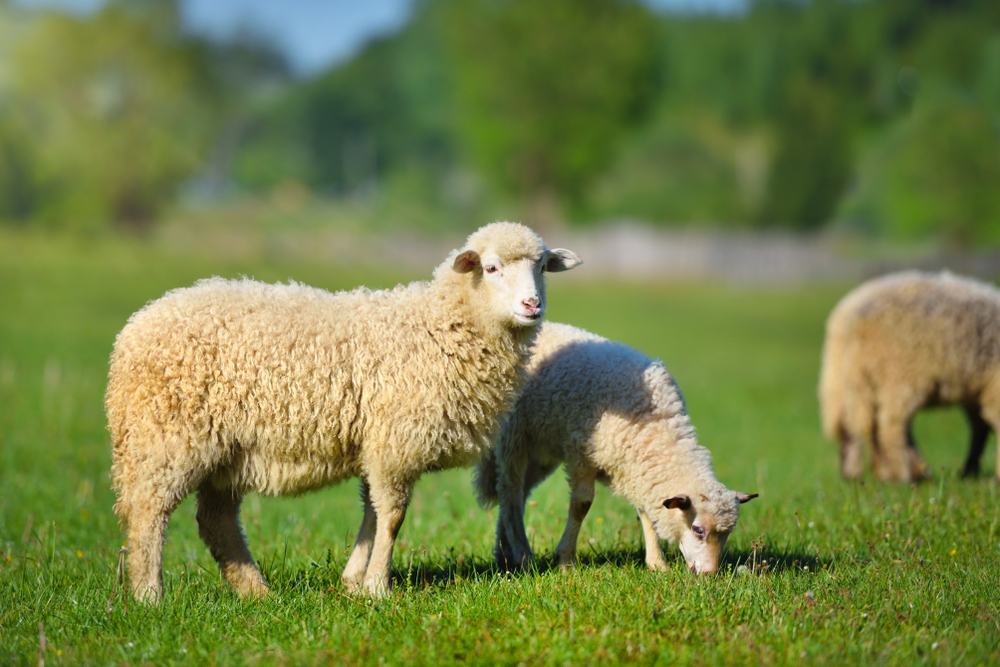What Is the Prescribed Method of Animal Sacrifice?
Shafi'i Fiqh
Answered by Shaykh Irshaad Sedick
Question
What is the prescribed method of animal sacrifice? What is the maximum number of cuts, and what happens if the animal moves after the first cut and the knife is raised before the second cut? The sources available in France stipulate that such a sacrifice is invalid according to the Maliki madhab and that the meat is not consumable.
I would like to know what the ruling is according to Shafi’i Fiqh. I would also like to know if it is mandatory to tie the legs of the sheep or if it is just recommended.
Answer
In the Name of Allah, the Most Merciful and Compassionate. May Allah alleviate our difficulties and guide us to that which is pleasing to Him. Amin.
Please see the details related to your questions below. The specific sections directly related to your questions have been marked in bold. [Keller, Reliance of the Traveler]
Conditions of Animal Sacrifices
It is permissible to slaughter anything with a cutting edge, but not a tooth, bone, or claw, whether human or otherwise, attached to the body. [ibid.]
The necessary condition for slaughtering any animal within one’s capacity to slaughter (domesticated or wild) is to cut both the windpipe and the gullet (windpipe meaning the channel of breath, and throat meaning the channel of food and drink which lies beneath the windpipe. [ibid.]
It is not necessary for the validity of slaughtering to cut the carotid arteries, which are two blood vessels on the sides of the neck encompassing the windpipe. [ibid.]
Suppose the slaughterer neglects to cut any part of the windpipe or gullet, and the animal dies. In that case, it is considered an unslaughtered dead animal, as in an animal with nothing but purely reflexive movement left when one finishes cutting a part of the windpipe or gullet previously missed. [ibid.]
If the slaughterer cuts from the back of the neck until he severs the windpipe and gullet, it is a sin because of the excess pain caused (though it is valid as slaughtering. Chopping off heads of chickens with a hatchet is offensive, though the meat is lawful). [ibid.]
The slaughterer should cut swiftly and not take his time such that he has to cut two or more times. If he does, and there is no life remaining in the animal on the second swipe, the animal has died unslaughtered and is impermissible to eat. The determining factor is whether life remains in the animal when the knife is applied at the beginning of the last stroke, which successfully severs both the windpipe and gullet, whether this is the second or third. [ibid.]
Recommendations when Slaughtering
- to turn the animal toward the direction of prayer (qibla);
- to sharpen the knife;
- to cut rapidly (even faster than is obligatory, such that it does not take two or more swipes, as mentioned above);
- to mention Allah’s name (for the spiritual grace therein, saying “Bismillah,” as is Sunna) (this is obligatory in the Hanafi school);
- to bless the Prophet (Allah bless him and give him peace);
- and to cut the large blood vessels (on either side of the neck). [ibid.]
Sorting other than camels (such as cattle, sheep, goats, or horses) is recommended by drawing the knife across the throat at the top of the neck after laying them on their left side. Slaughtering them this way is only recommended to easily enable the slaughterer to hold the knife in his right hand and the animal’s head with his left. It is also Sunna for the animal’s legs to be bound, except the right hind leg, so the animal will not jerk during slaughtering and cause the slaughterer to miss his mark. The right hind leg should be left free to pacify the animal by giving it something to move). [ibid.]
It is necessary that the slaughterer not raise his knife hand while slaughtering.
(while drawing it across the neck). If he lifts it before completely severing the windpipe and gullet and then returns to cut them, the animal is not lawful to eat. [ibid.]
I pray this is of benefit and that Allah guides us all.
[Shaykh] Irshaad Sedick
Checked and Approved by Shaykh Faraz Rabbani
Shaykh Irshaad Sedick was raised in South Africa in a traditional Muslim family. He graduated from Dar al-Ulum al-Arabiyyah al-Islamiyyah in Strand, Western Cape, under the guidance of the late world-renowned scholar, Shaykh Taha Karaan.
Shaykh Irshaad received Ijaza from many luminaries of the Islamic world, including Shaykh Taha Karaan, Mawlana Yusuf Karaan, and Mawlana Abdul Hafeez Makki, among others.
He is the author of the text “The Musnad of Ahmad ibn Hanbal: A Hujjah or not?” He has served as the Director of the Discover Islam Centre and Al Jeem Foundation. For the last five years till present, he has served as the Khatib of Masjid Ar-Rashideen, Mowbray, Cape Town.
Shaykh Irshaad has thirteen years of teaching experience at some of the leading Islamic institutes in Cape Town). He is currently building an Islamic online learning and media platform called ‘Isnad Academy’ and has completed his Master’s degree in the study of Islam at the University of Johannesburg. He has a keen interest in healthy living and fitness.
